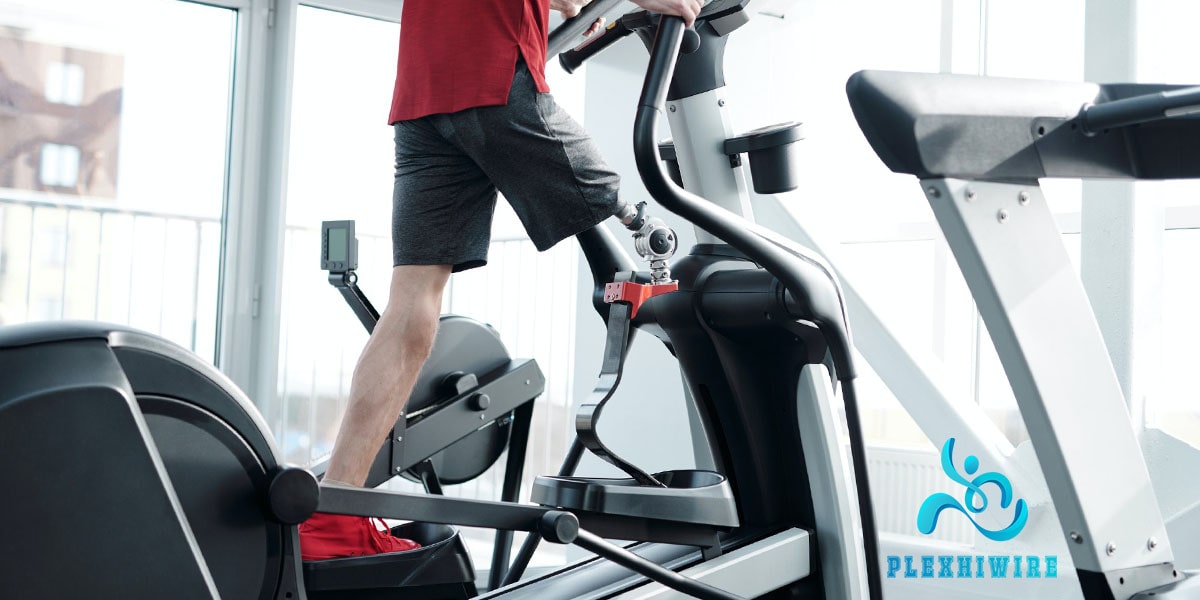How to Clean an Exercise Bike
Exercise has been proven to be an effective way of achieving overall physical health and fitness, and dozens of workout machines – such as treadmills, stationary bikes, and ellipticals are available to make your home workouts more convenient. And while you may think that using one of these machines is all it takes to give yourself a full body workout, there’s actually one important step often overlooked cleaning the machine! In this blog post, we’ll show you how to clean an exercise bike so that it can last longer and provide an enjoyable experience during every use.
Keeping your exercise bike clean is essential for maintaining its longevity, and it ensures that you can enjoy a comfortable workout experience. Not only does having an untidy machine lead to a buildup of dust, dirt, and sweat, but it affects the performance of the bike as well. Perhaps most importantly, not cleaning your fitness equipment also increases the risk of developing skin irritation or infections caused by bacteria lingering on unclean surfaces. So if you’re looking for tips on keeping your exercise equipment in top condition – read on!
- How to Clean an Exercise Bike
- How to Disassemble Your Exercise Bike for Deep Cleaning
- What Do You Need to Clean an Exercise Bike?
- What are the Benefits of Cleaning an Exercise Bike Regularly?
- How to Remove Rust and Corrosion from Metal Parts of Exercise Bike
- Tips for Cleaning Plastic and Upholstered Parts of an Exercise Bike
- Common Mistakes to Avoid When Cleaning an Exercise Bike
- Conclusion
How to Disassemble Your Exercise Bike for Deep Cleaning
Exercise bikes are a popular piece of fitness equipment that provides a convenient way to get in a cardiovascular workout from the comfort of your own home. However, over time, exercise bikes can accumulate dirt, sweat, and other debris that can affect their overall performance and longevity. In order to keep your exercise bike functioning optimally, it’s important to perform a deep cleaning on a regular basis.
To disassemble your exercise bike for deep cleaning, begin by unplugging the machine and removing any visible dirt or debris from the exterior using a damp cloth. Next, locate any screws or bolts on the bike that are holding it together and use a screwdriver or socket wrench to remove them. It’s important to keep track of where each screw or bolt belongs so that you can reassemble the bike correctly later on.
Once all of the screws and bolts have been removed, carefully lift off any panels or covers to access the internal components of the bike. Take extra care when dealing with any electrical components, such as the resistance system or display screen. Use a soft brush or cloth to gently clean any dirt or grime from these components, being careful not to apply too much pressure or get any water or cleaning solution on them.
If your exercise bike has a chain or belt, you may need to remove the crank arms or pedals to access these components. Refer to your bike’s owner manual for instructions on how to do this properly. Once the chain or belt is exposed, use a rag to wipe away any debris and apply a lubricant as directed by your manual.
Finally, once all of the components have been cleaned and lubricated, reassemble your exercise bike by following the reverse of the disassembly steps. Take note of any screws or bolts that have been replaced and ensure that they are tightened securely to avoid any structural damage or malfunctions.
What Do You Need to Clean an Exercise Bike?
Exercise bikes are a popular and convenient way to stay fit and healthy from the comfort of your own home. However, just like any other piece of exercise equipment, it requires regular cleaning to stay in top condition. Keeping your exercise bike clean not only helps to prolong its lifespan but also provides a hygienic workout environment that is free from unpleasant odors and harmful bacteria.
To clean an exercise bike, you will need a few items. Firstly, you will need a clean cloth or towel that is absorbent and soft. You should avoid using abrasive cloths or materials that may scratch or damage the bike’s surface. Additionally, you will need a bucket of warm water, a mild soapy solution, and a spray bottle of disinfectant.
See more: Strategies for Staying Motivated While Riding a Spin Bike
Begin by wiping down the entire bike with a dry cloth to remove any loose dirt or dust. Next, use a damp cloth with a mild soapy solution to clean a bike’s frame, handlebars, seat, and pedals. Be sure to pay extra attention to any areas that may have sweat buildup. Use a soft-bristled brush to get into any hard-to-reach areas, and then rinse the bike thoroughly with clean water.
After cleaning a bike with soap and water, be sure to wipe it down with a clean, dry cloth to remove any excess moisture. Finally, spray a disinfectant onto the surfaces of the bike to eliminate any harmful bacteria and prevent the growth of mold and mildew.
What are the Benefits of Cleaning an Exercise Bike Regularly?
Exercise has become an essential part of many people’s daily routines. Users of exercise bikes, in particular, find it convenient to burn calories, improve cardiovascular health, and boost muscle endurance at home. However, as with all types of equipment, regular cleaning of exercise bikes is crucial to maintain optimal performance and ensure safe and hygienic usage.
Cleaning an exercise bike regularly comes with numerous benefits that go beyond a clean appearance. For one, an unclean exercise bike can impact your health negatively. Sweat, dust, and other elements can accumulate and create bacteria, which can be detrimental to your health. Cleaning your bike regularly will not only leave you with a hygienic and safe environment but will also reduce the risks of contracting infections.
In addition to improving hygiene, cleaning an exercise bike regularly can also guarantee the bike remains in tip-top condition. Dirt and grime accumulation over a long period can disrupt bike functionality. Cleaning with a soft cloth and a mild solution can prevent sweat and other residues from clogging different parts of the exercise bike, creating a more efficient system that lasts longer.
Furthermore, some exercise bikes come equipped with electronics such as screens, control panels, and heart rate monitors that require proper upkeep. Using appropriate cleaning materials such as microfiber cloths or screen cleaner solutions can help keep these electronics clean and functioning correctly. Cleaning will also prevent the buildup of dirt and protect the electronic components from damage.
How to Remove Rust and Corrosion from Metal Parts of Exercise Bike
With regular usage, the metal components of the exercise bike can become susceptible to rust and corrosion. Rust and corrosion not only detract from the longevity and functionality of the equipment but also pose a safety hazard to the user.
Fortunately, there are several ways to remove rust and corrosion from the metal parts of an exercise bike. One of the primary methods involves using a rust dissolver solution. These solutions contain a blend of chemicals specially designed to dissolve rust and corrosion from metal parts, leaving the surface clean and smooth. To use a rust dissolver, one must first remove any loose rust or debris from the affected surface, and then apply the solution generously, allowing it to sit for the recommended time before wiping the surface clean.
Another effective method to remove rust and corrosion involves using a mixture of vinegar and baking soda. This natural solution is gentle on the metal components, yet powerful enough to remove tough stains and rust build-up. Users should create a thick paste by mixing baking soda and vinegar and spreading it over the affected area. After allowing the paste to sit for a few minutes, users can scrub the surface with a brush in circular motions before rinsing it clean with water.
It is worth noting that prevention is always better than cure when it comes to rust and corrosion. Users should take care to keep their exercise bikes dry and clean after each use, especially during humid conditions or when stored in a damp area. Additionally, users can apply a protective coating, such as a rust inhibitor, to metal components, which provides a barrier against moisture and prevents rust and corrosion from forming.
Tips for Cleaning Plastic and Upholstered Parts of an Exercise Bike
When it comes to maintaining an exercise bike, it is essential to clean both the plastic and upholstered parts regularly to prevent the accumulation of dirt, bacteria, and sweat from previous workouts. But cleaning these areas can be tricky, especially if you don’t know the right techniques or products to use. Here are some tips for cleaning plastic and upholstered parts of your exercise bike effectively and efficiently:
Plastic parts: One of the easiest ways to clean plastic parts, such as the seat, handlebars, and pedals, is by using mild detergent and warm water. Simply mix the detergent with water, dip a soft sponge or cloth into the solution, and gently wipe the plastic areas. Avoid using abrasive or harsh chemicals that can damage the plastic’s surface and cause discoloration or cracks. You can also use a plastic cleaner specifically designed for exercise equipment if you want a more thorough clean, but always check the manufacturer’s instructions before use.
Upholstered parts: Cleaning upholstered parts, such as the seat cushion or backrest, requires a different approach. Firstly, remove any loose dirt or debris by gently brushing or vacuuming the surface. Then, mix a small amount of mild detergent with warm water and use a soft cloth or sponge to dab the solution onto the stain gently. Avoid scrubbing too hard, as this can cause the fabric to fray or tear. Rinse the area with clean water and dry it with a clean cloth. Always test any cleaning product on a small, inconspicuous area before use, to ensure it doesn’t damage the fabric.
Read more: How Do I Increase the Resistance on a Stationary Bike?
Common Mistakes to Avoid When Cleaning an Exercise Bike
Like any other equipment, exercise bikes require regular cleaning and maintenance to ensure longevity and a hygienic workout session. Cleaning an exercise bike might seem like a simple task, but it is vital to avoid making common mistakes that can damage the equipment or lead to an unsanitary workout.
So, what are some of the common mistakes to avoid when cleaning an exercise bike?
Using harsh chemicals: It is common to assume that using strong cleaning solutions is an effective way to clean exercise bikes. However, this can be detrimental to both the equipment and the user. Harsh chemicals can cause damage to the bike’s surfaces, leading to discoloration or degradation of the materials. Moreover, these chemicals can leave behind harmful residues that can irritate the skin or cause other health problems. Instead, opt for mild detergents or eco-friendly cleaning products that are safe for both the environment and your exercise bike.
Neglecting the crevices and hard-to-reach areas: Exercise bikes have several nooks and crannies that can trap dirt, sweat, and other grime. Neglecting these areas can lead to the build-up of bacteria and germs that can cause foul odors and even infections. When cleaning your exercise bike, pay attention to the hard-to-reach areas such as the pedals, flywheel, and chain. Use a soft-bristled brush or a cloth to remove any dirt or debris stuck in these areas.
Using too much water: While it is necessary to clean your exercise bike with water, using too much water can be detrimental to the bike’s electronics and other sensitive components. Excessive moisture can lead to rust, corrosion, and short-circuiting. Hence, it is crucial to use a damp cloth or sponge to wipe down the bike’s surfaces. Avoid spraying water directly onto the bike or soaking it in water.
Forgetting to lubricate the bike: Lubrication is essential to keep your exercise bike functioning smoothly and reduce wear and tear on the equipment. However, many people forget to lubricate their bikes after cleaning them, which can lead to damage or malfunction. Make sure to apply a thin layer of lubricant on the bike’s moving parts such as the chain, pedals, and flywheel after cleaning it.
Conclusion
Learning how to clean an exercise bike is not only simple but necessary in the long run. It decreases your likelihood of spreadable bacteria or viruses, as well as makes for more enjoyable and safe workouts. Both the parts and internals of an exercise bike require specific cleaning techniques, which can be easily followed for a stress-free routine. Cleaning an exercise bike regularly ensures you can get through your workout without any distractions from dust or dirt around you. Many different parts will need attention, so be sure to look into individualized material suggestions to avoid any damage or degradation of your bicycle parts. Taking care of your equipment also helps you get the most out of it since all components are working together in tandem to give you a great workout experience.
Finally, if you’re still struggling or don’t feel comfortable tackling repairs of any kind, don’t be afraid to call in the professionals who have experience working on other exercise bikes. They may even be able to make repairs before any damage is caused. Whatever the case may be, taking good care of your exercise bike is something that every rider should do. Following this advice will keep you and your machine strong and healthy!






